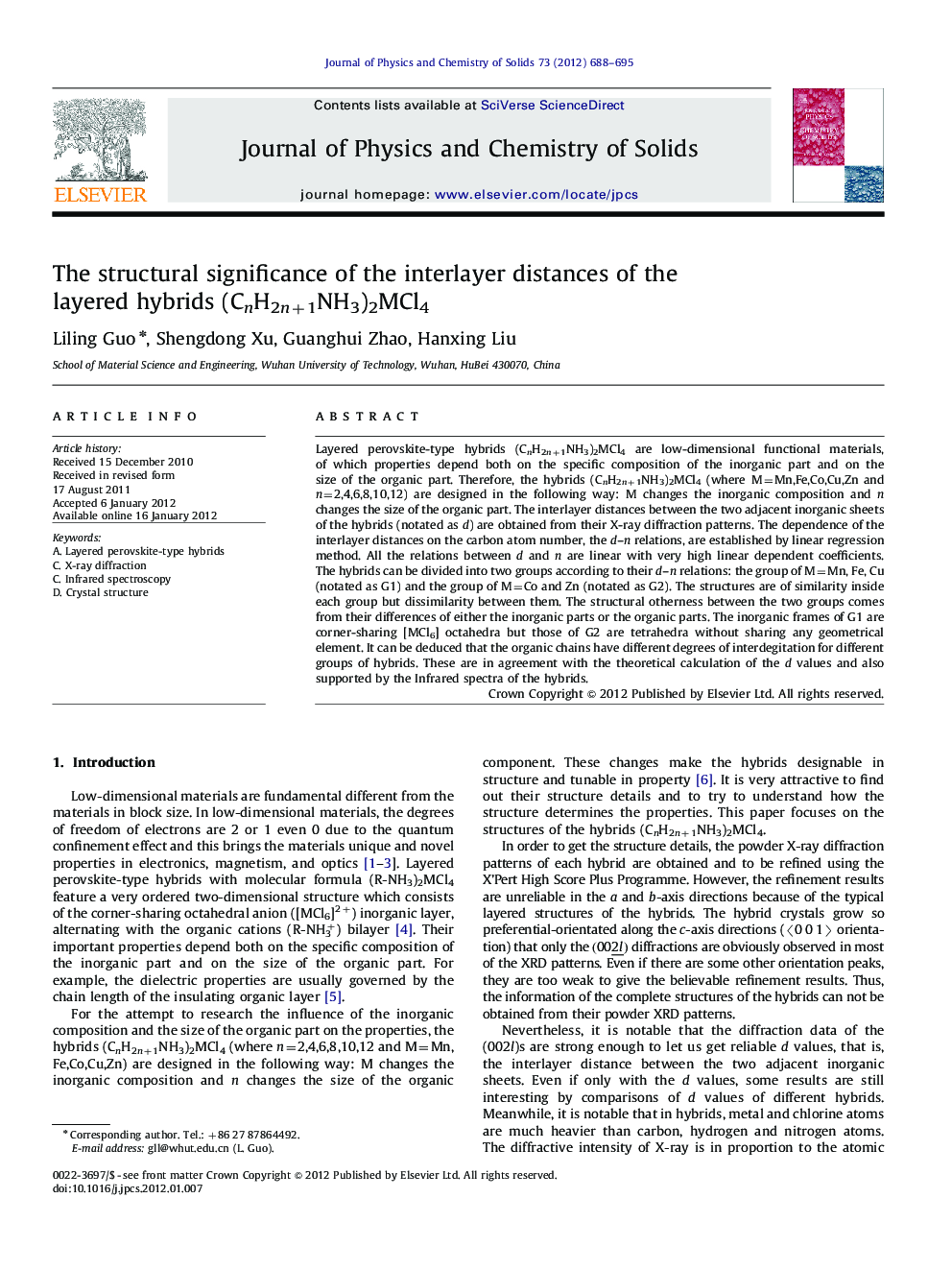| کد مقاله | کد نشریه | سال انتشار | مقاله انگلیسی | نسخه تمام متن |
|---|---|---|---|---|
| 1516586 | 1511561 | 2012 | 8 صفحه PDF | دانلود رایگان |

Layered perovskite-type hybrids (CnH2n+1NH3)2MCl4 are low-dimensional functional materials, of which properties depend both on the specific composition of the inorganic part and on the size of the organic part. Therefore, the hybrids (CnH2n+1NH3)2MCl4 (where M=Mn,Fe,Co,Cu,Zn and n=2,4,6,8,10,12) are designed in the following way: M changes the inorganic composition and n changes the size of the organic part. The interlayer distances between the two adjacent inorganic sheets of the hybrids (notated as d) are obtained from their X-ray diffraction patterns. The dependence of the interlayer distances on the carbon atom number, the d–n relations, are established by linear regression method. All the relations between d and n are linear with very high linear dependent coefficients. The hybrids can be divided into two groups according to their d–n relations: the group of M=Mn, Fe, Cu (notated as G1) and the group of M=Co and Zn (notated as G2). The structures are of similarity inside each group but dissimilarity between them. The structural otherness between the two groups comes from their differences of either the inorganic parts or the organic parts. The inorganic frames of G1 are corner-sharing [MCl6] octahedra but those of G2 are tetrahedra without sharing any geometrical element. It can be deduced that the organic chains have different degrees of interdegitation for different groups of hybrids. These are in agreement with the theoretical calculation of the d values and also supported by the Infrared spectra of the hybrids.
► Layered perovskite-type hybrids (CnH2n+1NH3)2MCl4 are low-dimensional materials.
► (CnH2n+1NH3)2MCl4 are designed by changing M and n in inorganic and organic part.
► The interlayer distance d are highly linear dependent on number of carbon atoms n.
► The d–n relationships divide the hybrids into two groups.
► The structures are similar inside each group but different between the two groups.
Journal: Journal of Physics and Chemistry of Solids - Volume 73, Issue 5, May 2012, Pages 688–695